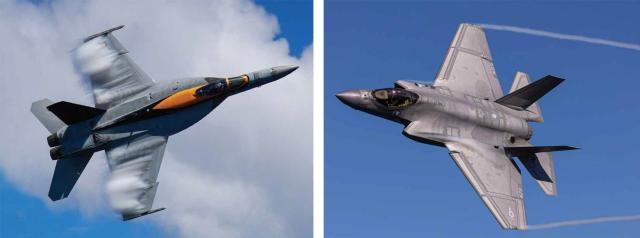Captain Sam J. Tangredi, U.S. Navy (Retired)

“The ultimate cause of our failure was a simple one . . .
the inferior science of our enemies. I repeat—by the inferior science of our enemies.”
—Arthur C. Clarke, “Superiority”1
U.S. national security cannot rely exclusively on a tightly networked, system-interdependent, high-bandwidth–requiring, all-digital joint force in a fight against a technologically near-peer opponent. Likewise, it cannot depend primarily on an exquisite information grid consisting of an “internet of things.”2
Despite the advantages the combat systems such a force might need, they also would bring vulnerabilities and disadvantages—vulnerabilities that have not been evident in operations since 1991. Since then, the United States has not faced opponents that could fight its networks. Nor has the United States had to “fight to get to the fight.” That will not be the reality of combat in a “great systems conflict” characterized by a high level of electromagnetic and cyberwarfare and kinetic strikes against U.S. and allied C4ISR systems—particularly if such strikes came as a bolt from the blue.3
The U.S. joint force—particularly the Navy—needs to retain a “network-optional,” low-bandwidth, electromagnetically hardened, locally commanded, and systems-redundant blue-water “legacy” force if it intends to survive and keep fighting as the initial electromagnetic storm subsides and sophisticated digital networks must be reset to restore advanced precision-combat power. Although few of its individual combat systems would be truly analog, for contrast, this legacy reserve force could be called the “analog fleet.”

Contrary to some arguments, new systems are not always more affordable than older systems. For example, an F-35 (right) is estimated to cost $33,000 per flight hour (in 2012 dollars) compared to an FA-18 (left) at $10,507 per flight hour. If facing electromagnetic fires, three less digitally sophisticated aircraft could be more effective than one F-35. U.S. Navy (Kassandra Alanis)
Asymmetric Vulnerabilities from Technology
For every technological advantage, there is a potential counter: extensive jamming against long-haul, high-bandwidth communications; cyberwarfare tools well tested in peacetime against intermittent, just-in-time elements of the defense-support infrastructure; penetration into commercially produced computer code and artificial intelligence (AI) systems; antisatellite weapons versus satellites; drone swarms versus sophisticated but projectile-limited air-defense systems; and others.
In this technological measure-versus-countermeasure struggle, U.S. joint forces are asymmetrically vulnerable compared with potential opponents because of the long, oceanic distances they need to traverse to close with the enemy, as well as the U.S. expectation of information availability. There is still tyranny in distance. In a potential war against a large island in the East China Sea (Taiwan), the invader needs to cross approximately 100 nautical miles (nm) of ocean while significant U.S. forces need to transit 6,000 nm.
Long distances generally require communications via satellite for high-bandwidth transmission, which requires satellite survivability—particularly if command and control is to be exercised at the combatant commander level. Satellites and communication and sensor capabilities are vulnerable to direct-assent weapons (missiles), killer satellites (which both Russia and China have demonstrated), high-energy lasers (against low-Earth-orbit satellites), and high-velocity space debris. Satellites can be hardened against debris, but always at a cost to mission capabilities. Starlink and other cubesats can be deployed as replacements but not as quickly as proponents might portray.4
Alternatives, such as high-frequency (HF) radios, cannot push the same amount of information and are more likely to reveal positions. Potential opponents, operating in their home regions, hold the classic military advantage of “interior lines of communication.”5
The Navy’s dependence on high volumes of information is epitomized by ashore maritime operations centers (MOCs). Yet, in a treatise on Mosaic warfare, analysts at the Center for Strategic and Budgetary Assessments admit that:
Centralized decision-making . . . will likely be neither possible nor desirable during future conflicts in highly contested environments. Improving adversary electronic warfare (EW) and other counter-C2 and intelligence, surveillance, and reconnaissance (C2ISR) capabilities will reduce the ability of U.S. commanders to understand or communicate across theaters. These actions will constrain the ability of U.S. commanders to gain awareness or exert control over large groups of U.S. forces.6
The Incident on 7 December 2021
On 7 December 2021, Amazon Web Services’ digital network went down for several hours, an outage that affected not only Amazon, but also the many other companies connected to its web servers and their human and AI controllers. In addition to package delivery and Alexa voice assistance interruptions major corporate websites went down, at least one discount stock brokerage crashed, vacationers could not enter Disney World, and some smart light bulbs and Roomba vacuums stopped functioning.
This network outage may have been a mere annoyance to most involved, but the analysis it elicits—concerning more and more products of automation and centralization leading to unavoidable outages—should give defense decision-makers pause. There was no cyberattack. There was no electromagnetic warfare. There were none of the probable effects of a war against a technological near-peer opponent. Yet, one of the largest, wealthiest, and most powerful global corporations—with a net value larger than the GDP of some nations—was unable to prevent the loss of its network.
Scholars and systems analysts refer to such occurrences as “normal accidents.”7 Such accidents are not necessarily caused by operator error but are the result of three major factors: 1) the system is complex, 2) the system is tightly coupled, and 3) the system has catastrophic potential.
Major combat can be considered to consist of “abnormal accidents.” In combat between near-peer opponents—equal technology and equal competence—fog, friction, and chance become the dominant factors in determining the outcome. The results certainly have catastrophic potential. Add what the People’s Liberation Army calls “intelligentized warfare”—designed specifically to cause failure of U.S. networks that rely on satellites to transmit data—and the prospect of catastrophic failure is increased.
The Fallacy of Divestment
The collective wisdom is that the services need to divest themselves of legacy systems to free financial resources to develop newer, more technologically sophisticated systems. But this is predicated on three assumptions. The first is that the money “freed” will be directed toward future acquisition.
Second is that technologically sophisticated systems can substitute for and improve current operational capabilities. Arguments on this assumption are reflected in the continuing debate over whether the U.S. Air Force’s A-10 Warthog, designed for close-air support, can be retired because that mission can be carried out by newer aircraft not originally designed for close-air support that would need to conduct such a mission from higher altitudes.8

Several decommissioned Oliver Hazard Perry–class frigates at the Philadelphia Navy Yard in 2018. The Navy must overhaul its current method of mothballing ships—preserving hulls but not maintaining combat or engineering systems—and retain a reserve fleet of functional decommissioned ships that are maintained and even conduct periodic operations. R’Lyeh Imaging
Third is that newer systems would be more affordable, or at least comparably priced in terms of acquisition, maintenance, and support costs than the systems they replace. That was one of the justifications used in the decision to fund the littoral combat ship program, forgoing proven systems.9
However, these arguments are usually not true. For example, operating and maintenance costs for F-35 Lightnings are much higher than for the aircraft they replaced. An F-35 is estimated to cost $33,000 per flight hour (in 2012 dollars) compared with an FA-18 at $10,507 per flight hour. Yes, the F-35 is a more capable aircraft, but in a war against a technological near-peer in which attrition will dominate, one cannot assume that one advanced aircraft is more valuable than three less-capable ones carrying triple the (smart) weapons load.10
If, as some strategists maintain, a U.S. victory in a naval war in the western Pacific rests on long-range anti-ship missiles (LRASMs) fired from long-range aircraft (B-52s, for example), a digitally unsophisticated “smart weapons bus” could be more effective than a carrier- or land-based F-35 when facing electromagnetic fires. Which aircraft would be more vulnerable, all digital or part analog? Perhaps the United States needs to flight test that comparison—with one against three.
From the perspective of the Sea Services, perhaps the worst assumption is that the resources saved from divesting rather than maintaining legacy systems will be available for investment in future, more-capable systems that perform the same missions. In a joint system that inevitably bases resource decisions on immediate needs, there are no guarantees that the “saved” money will fund replacement capabilities—and certainly not more ships or systems. The Marine Corps is experiencing this today as amphibious warships are being retired prior to funding for and construction of the new light amphibious warships on which its new doctrine in part depends.11
What Should the Naval Services Do?
To hedge against a potential catastrophic network failure, the Navy needs to take three near-term actions requiring resource allocations:
1. Overhaul and revitalize its approach to retaining a reserve fleet of decommissioned ships, including maintenance and periodic operations.
2. Fund development of network-optional warfare systems, including at least one program of record to test the concept at sea.
3. Conduct strike group exercises without transmitting data ashore to naval or joint headquarters or other facilities. Limited amounts of vital information from shore sources should be transmitted to forces at sea via burst communications (satellite downlink) or HF.
The Navy’s current method of mothballing ships is to preserve hulls at minimal costs with little regard for maintaining combat or engineering systems or keeping them operational. Despite laws that require a reserve fleet, the ships are essentially scrapped in place—which is why Congress fought to keep the remaining Ticonderoga-class cruisers in commission.
Older platforms generally are less compatible with evolving C4ISR systems, but therein is their virtue. For a relatively modest investment compared with new construction, the Navy should develop a series of tests and exercises designed to keep its old C4ISR, weapons, and engineering systems to maintain a less network-dependent legacy reserve analog fleet.
Network Optional Warfare (NOW) is an organizing principle developed by faculty and students at the Naval Postgraduate School for a series of experiments designed to develop “deliberate, stealthy, minimalist tactical communications” using “multiple technical arenas.”12 With practically no budget, NPS students have attempted experiments that read like “useful fiction.” A particularly imaginative attempt included posting huge QR codes on the roofs of buildings to be optically scanned by overhead aircraft—including uncrewed aerial vehicles (UAVs)—to receive pre-embedded mission orders with no transmissions required. Impractical at scale, perhaps, but imagine what could be developed if, with an investment of resources, NOW principles could be applied to future combat systems.
Radio silence was a preferred mode of battle group operations during the Cold War—the last time the United States faced a technological near-peer. With ships depending less on networks outside the battle group and its organic assets, the groups needed to creatively stretch their assets to carry out mission-type orders. At the same time, deception techniques were developed against satellites and other means of long-range detection. Given the scope of the electromagnetic battle the Navy faces today, extensive exercises without connection to inorganic networks should again be preferred.
Admitting the Risk
As cybercrime journalist Brian Krebs notes, “I’ve come to the conclusion that if you give a data point to a company, they will eventually sell it, leak it, lose it or get hacked and relieved of it. There really don’t seem to be any exceptions.”13
If this is the state of digital cyber-state technologies (that turn the highest commercial profits), why does the Department of Defense perceive itself as immune? Secretaries of Defense have visited Silicon Valley to publicly extol the virtues of high-tech commercial research and development, but rarely discussed publicly is the potential for a 7 December Amazon incident to occur on a “normal” basis.
Every decision entails risk, including divesting legacy systems. In a recent response to Congress, the White House stated that “the Administration particularly opposes excessive authorization levels for platforms and systems that cannot be affordably sustained or modernized in order to provide survivable, lethal, and resilient forces in the current threat environment.”14 Survivable, lethal, and resilient are subjective descriptions. It is uncertain what will be survivable, lethal, and resilient against a technological near-peer—particularly one whose force is larger overall than the U.S. Navy’s.
The U.S. military—particularly the Navy—should consider hedging against defeat by retaining a legacy analog reserve fleet that makes up in numbers what it lacks in the latest outwardly impressive—but inwardly vulnerable—new technologies. Or, at the very least, the Department of Defense must admit the risks of high-technology vulnerabilities. They are extensive.
No comments:
Post a Comment